Concrete Pouring
About Concrete Pouring
Concrete pouring is exactly as it sounds. Pouring concrete is the process of pouring mixed concrete to form a slab used for different things such as driveways, foundations, walkways, and more. Every concrete pouring job is unique and depending on the property is how the job will be planned out. To ensure you achieve your desired look it is important to be meticulous in your planning as far as the design and size of your concrete pouring job.
Materials Needed for Concrete Pouring
There are many different materials and tools that you will find on construction sites but there are a few that are absolutely necessary for concrete pouring jobs. When it comes to concrete pouring these materials are important to ensure that the job is done efficiently and you get a beautiful final product.
Free Quote
Fill out this form and someone from our team will be in touch with you shortly.
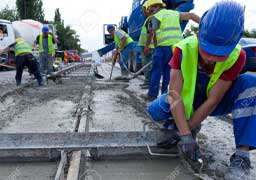
Protective Gear
Protective gear is important to any construction job, but is very important to concrete pouring jobs. Many people may not realize the potential danger with pouring concrete between the loud noises caused by machinery or the dust that comes from mixing the concrete for pouring. On concrete pouring jobs it is important to have protective eye gear such as goggles or glasses to keep your eyes from burning. Protective hearing gear is necessary to help protect your ears from loud machinery associated with concrete pouring and of course it is important to have protective breathing gear like a mask to keep your lungs safe from dust and fumes often found on site.

Screeds
Screeds are long, stiff tubing or boards that are used to help smooth over or level the concrete shortly after it is poured. There are many different types and sizes to choose from that can even cater to specific to the job you are doing.
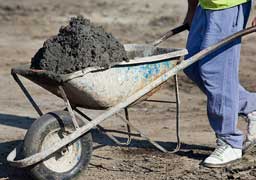
Wheelbarrows
Wheelbarrows are important for transferring smaller amounts of concrete around the job site. You never know when you’ll need to transfer concrete to another area to help even out the slab or fill any spots that may have become sunken in. Wheelbarrows can also be useful in transporting tools around the job site if there are too many to carry by hand.
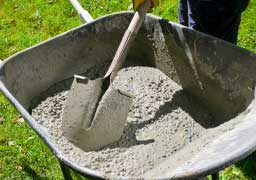
Shovels and Buckets
Shovels and buckets are an important part of the concrete pouring process. Shovels help fill small areas and hard-to-reach places and can also be used to remove excess concrete if the forms overflow. Rather than the traditional rounded-end shovel, you’ll most likely find the square-ended shovel on concrete pouring job sites. Buckets are useful for carrying water which can be helpful on dry or humid days. Every concrete pouring job can benefit from keeping a bucket on hand.
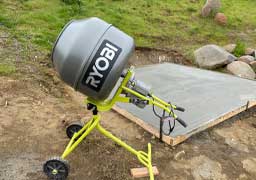
Portable Mixer
A portable mixer comes in handy on any job site that needs additional concrete or needs smaller amounts of concrete rather than having a truck come in. There are many sizes available for portable mixers ranging from those that can be hauled on the back of a standard pickup truck to those that are towed to the job site.
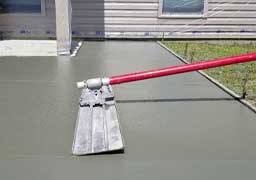
Floats
Floating is an essential part of any concrete job. The float is used to ensure an even and smooth finish on the concrete surface.
There are many different tools that you will find on a concrete pouring job site and it varies depending on the type and size of the job.
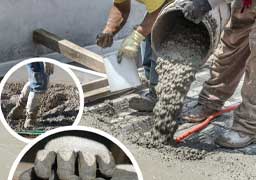
Rubber Gloves and Rubber Boots
It may not seem like they are necessary but rubber gloves and boots are absolutely necessary when working on concrete pouring jobs. The gloves protect your skin from the harmful irritants that can be found in cement mixtures and rubber boots keep you prepared to step in the concrete at any time. Even with standard work boots the concrete can seep through seams or over the ankles of boots and irritate the skin causing harm.

Laser Level
While a string is more traditional on the job, the most preferred level has become the laser level. This tool can ensure that the forms are all levels without having a string that gets in the way. The best part about this tool is the laser stays truly level over long distances as well.
Call For a Quote:
844-482-8330
Concrete Pouring Process
Pouring concrete isn’t as simple as it may seem. Each job is unique and has different requirements as far as the number of materials and tools used. The great thing about concrete pouring is while materials and measurements may not be the same the process itself is very straightforward.

Preparation
The first step in the process is the preparation and the preparation for a concrete pouring project is important because it sets the foundation for the project as a whole. Grass, trees, and any pre-existing concrete will be removed so there is raw earth to work with. After everything is cleared and marked off, a sub base is put down and compacted to prepare for the poured concrete.
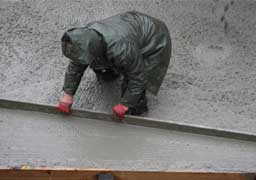
Pre-Finish
After the concrete is poured it is important to make sure it is level which can be achieved by using screeding. This is the process of using a long board to compact the concrete. Floats are then used to ensure smaller areas as well as edges are well compacted and even with a smooth finish.
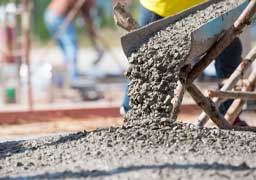
Forming
The next step is to set the forms which are held in place by wood or metal stakes. The forms are specifically designed to be easily removed after the concrete has cured.

Finish
Once the surface is ready, customers can then choose a finish. There are many finishes to choose from such as stamped, textured, or smooth troweled.
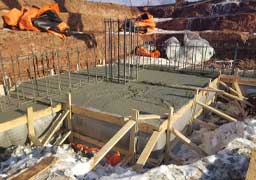
Pouring Placement
With the forms in place, it is time to pour the concrete. Ready-mix concrete trucks are brought to the job site if they can be reached, if not there are other options for the job such as portable mixers. A concrete pump can also be used to get concrete where it needs to be while the crew works to make sure it is evenly distributed and prevent air pockets.

Cure
Finally, the concrete can rest and begin the curing process. A curing compound can be immediately applied to help with an even curing process and reduce the risk of cracking. The entire curing process takes around a month to complete, but the first week is the most crucial. During the curing time be sure to follow all care instructions to ensure you have the best concrete cure possible.
Call For a Quote:
844-482-8330

What You Can Achieve With Concrete
Concrete is an incredibly durable material that has become increasingly popular in both indoor and outdoor settings not only because of its strength but also its versatility. There are many different things you can do with concrete to make it personal to you. It can be as simple as a stain or color to achieve your favorite color or stamped concrete to mimic the design of slate, wood, brick, or stone. There are many different options when it comes to concrete to make any indoor or outdoor space absolutely beautiful.
We Can Help You Find The Perfect Contractor
Finding the perfect contractor is important to your concrete pouring project to guarantee that it is done correctly. It is important to make sure that your homework is done when it comes to finding the perfect contractor for you. This includes looking around your area for highly-rated contractors, reading reviews on these contractors, and making calls to interview each company to see if they can meet your needs and be the right fit. Never be afraid to ask to see a portfolio or compare prices to other companies because the integrity and beauty of your project can depend on this research.
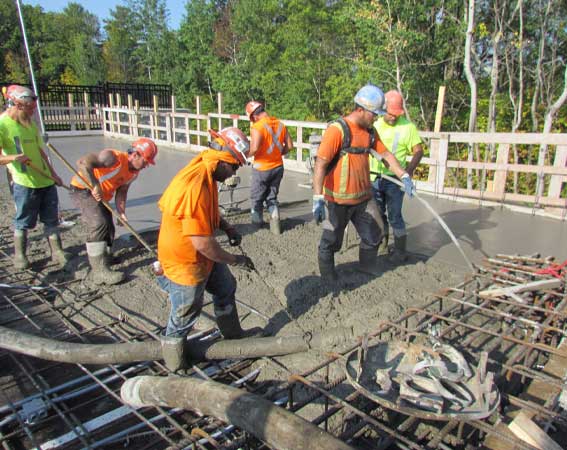
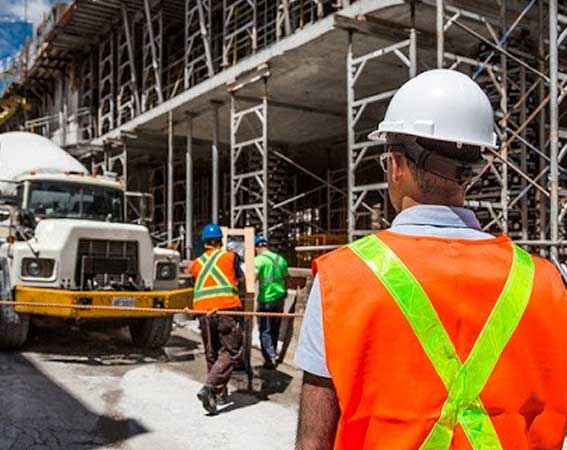
Professional Tips and Tricks for Concrete Pouring
While it is always best to hire a professional to complete your concrete pouring projects there may be smaller projects that you want to tackle on your own. If you do decide to take on a concrete pouring job on your own there are tips and tricks to the trade that can help make the process easier! Be sure to always keep the finished product in mind. It can be easy to get caught up in the work of concrete that you forget the vision you had which can turn your project into an entirely different one. Another tip is to be careful when trowling. It can be easy to rush through this step but always take your time trowling so that you don’t get ugly grooves on the surface. Becoming more familiar with your tools can help you with all your concrete pouring projects. One of the tools you should become most familiar with is an edging tool. This tool helps you create an edge where a bull float can’t reach. Mastering concrete can take time, but by taking your time it is a craft you can master!
Don’t Delay! Find the Perfect Professional for You!
Call a professional you can trust in your area today for all your concrete pouring needs!
F.A.Q.S
About Concrete Pouring
What are the best conditions to pour concrete?
When it comes to the timing of pouring your concrete slab it is important to get the timing right. If you pour concrete in conditions that are too hot or too cold it can severely affect the strength of your concrete slab. The best temperature to pour concrete is between 40-60 degrees so that you’re not left with weak concrete.
How long does it take for concrete to dry?
Drying is one thing and curing is another. For drying it generally takes anywhere from 24-48 hours to dry enough to walk on or in some cases even park your vehicle on. Although the drying process seems like a short time, there is actually a longer process for curing which is what will give the slab strength. It takes around 28 full days for concrete to be fully cured which ensures it will be strong and durable.
What is Pre Slab?
Pre slab and pre slab inspection are important to your concrete pouring job. The pre slab is the earth that has been prepped before the actual concrete pouring occurs. Pre slab inspections are done before concrete is poured to ensure that everything is primed and ready for the installation of your concrete. Having this done is important to the structural integrity of the slab and to ensure its strength and durability as well.
